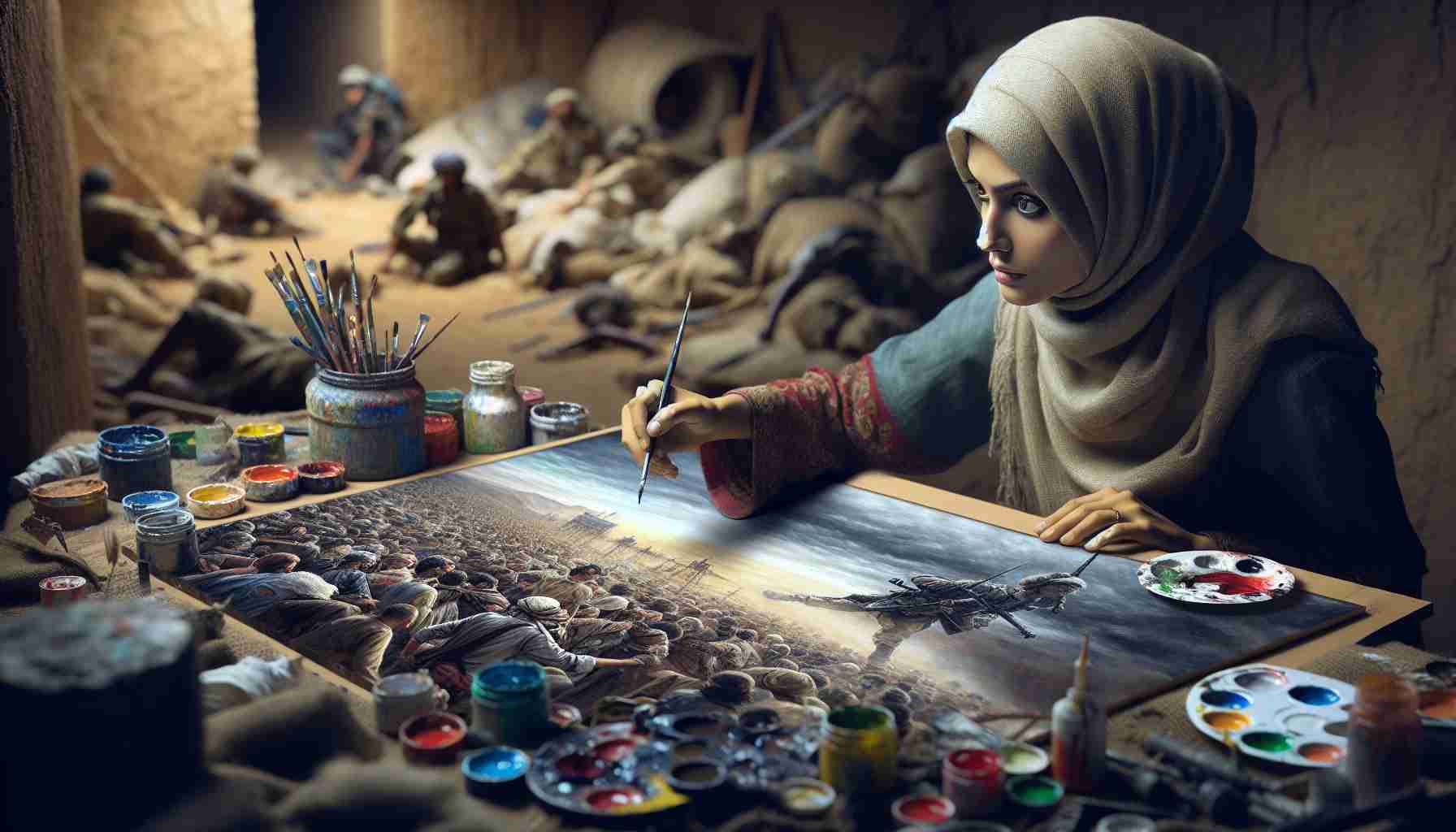As an artist from Gaza, May Murad uses her canvas to weave a powerful narrative. The artwork that currently occupies her attention depicts a young boy sleeping amidst the rubble—a silent testament to the destructive aftermath of conflict in Gaza.
Through her paintings, Murad is driven by the desire to shed light on the tragedy of war. Her work serves as a poignant reminder that the descendants of those who once suffered in World War II are now implicated in the creation of new generations of victims.
May Murad’s journey as an artist has evolved dramatically; initially, her paintings were inspired by the world outside of Gaza, a place she had only glimpsed through the internet. Now, based in France, her art is imbued with the memories of Gaza, intertwining the stark realities she lived with her experiences as a refuge.
Murad’s work is more than art; it is a chronicle of survival, a plea for peace, and a call to remember the costs of war. Through her poignant brushstrokes, she captures the essence of both the beauty of human resilience and the deep scars left by conflict.
Importance of Art in Conflict Zones
Artists in conflict zones like Gaza often face unique challenges and risks as they attempt to convey the realities of war and its impact on civilians. Their work can be a form of resistance against oppression, a method of raising awareness, and a tool for healing and processing trauma. Murad’s art adds an important voice to the chorus of those calling for peace and recognition of the human cost of ongoing conflicts.
Questions and Answers
– Q: Why do artists like May Murad choose to depict the horrors of war in their artwork?
A: Artists like Murad choose to depict war’s horrors to communicate the profound effects of conflict on innocent people, to preserve the memory of these events, and often to advocate for peace and justice. Art can be a powerful medium to capture and convey complex emotional and social narratives that might otherwise be overlooked by mainstream narratives.
– Q: How can art impact the perception of war in the international community?
A: Art can transcend language barriers and communicate emotional realities in a visceral way that reports and statistics cannot. It has the potential to evoke empathy, provoke discussion, and inspire action by giving personal and human context to the abstract concept of war.
Key Challenges and Controversies
The representation of war through art can be controversial, as it may be considered politically contentious or viewed as taking sides in a complex conflict. Artists like Murad may face criticism or censorship from various factions. Additionally, operating in a conflict zone can pose physical risks to artists, and the need to work in exile can lead to feelings of alienation and loss.
Advantages and Disadvantages
The advantage of Murad’s work is that it brings the narrative of Gazan civilians to the wider world, humanizing and providing insight into their experiences. However, the disadvantage can be the potential politicization of her art, which can detract from the human message and provoke divisive reactions.
For more information about the role of art in society and how it can influence perspectives on conflict, you can visit global arts and cultural organizations like UNESCO at UNESCO or international art news platforms such as ARTnews.

